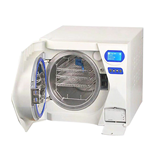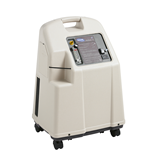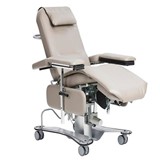Setting up a medical clinic is an exciting yet complex process. Whether you're opening a new practice or renovating an existing one, the fitout stage plays a critical role in ensuring your clinic is functional, compliant, and welcoming for patients. However, delays and budget overruns are common challenges that can impact your opening timeline and profitability.
In this guide, we'll explore practical strategies to fast-track your medical fitout, keep costs under control, and ensure your clinic is ready to open on schedule.
1. Start with a Clear Plan and Budget
Before beginning your fitout, create a detailed plan outlining:
- The scope of work (new fitout vs renovation)
- Key features and essential medical equipment
- Compliance requirements (e.g., infection control, disability access)
- A realistic budget with cost estimates for design, construction, and furnishings
A well-structured plan will prevent scope creep, avoid unexpected costs, and keep your project on track.
2. Understand Medical Fitout Costs
Medical fitout costs can vary based on factors such as the complexity of the design, quality of materials, and location. Here's a general breakdown:
-
Minor Fitout: Approximately $800 per square metre (excluding GST). This typically involves upgrades like enhancing the reception area.
-
Mid-Range Fitout: Ranges from $1,000 to $1,500 per square metre (excluding GST). This includes more comprehensive renovations with moderate finishes and fixtures.
-
Premium Fitout: Starts at $2,000 per square metre (excluding GST). This encompasses high-end designs with premium materials and custom features.
For a standard medical centre, costs typically range between $1,200 to $1,800 per square metre, excluding medical equipment. At the lower end, expect moderate finishes like laminate surfaces and simple lighting. The higher end includes premium finishes and fixtures.
In New South Wales, recent data indicates that medical practice fitouts have ranged between $180,000 to $425,000, with recent inflation pushing costs higher.
3. Choose an Experienced Medical Fitout Specialist
Medical fitouts are highly specialised and require expertise in:
- Regulatory compliance (e.g., Australian health and safety standards)
- Efficient clinic layouts to optimise workflow
- Medical-grade materials suitable for infection control
Working with an experienced fitout provider who understands these nuances can save time by reducing costly design errors and compliance issues.
Tip: Get multiple quotes from fitout specialists to compare costs and timelines before making a decision.
4. Obtain Necessary Permits Early
Delays in approvals and permits can significantly slow down your fitout process. Depending on your location and project size, you may need:
- Development approval (DA) for major structural changes
- Building permits for electrical and plumbing work
- Compliance checks for medical zoning regulations
Engaging a fitout specialist familiar with local council requirements can help you navigate these approvals faster.
5. Streamline the Design & Construction Process
A well-thought-out design can significantly impact the speed of your fitout. To avoid delays:
- Use prefabricated materials for faster installation
- Opt for modular furniture to reduce custom-build time
- Ensure tradespeople work in parallel rather than sequentially
Additionally, finalise all design choices (colours, fixtures, flooring) before construction begins to prevent last-minute changes that could push back your timeline.
6. Source Equipment & Materials Early
Supply chain disruptions can cause significant delays in receiving essential medical equipment and fitout materials. To avoid this:
- Order key equipment (e.g., examination tables, x-ray machines, sterilisation units) well in advance
- Check lead times for imported items
- Have backup suppliers in case of stock shortages
Tip: Work with a fitout specialist who can help source materials and ensure timely delivery.
7. Stay Flexible but Firm with Timelines
Unexpected issues can arise during any fitout, so it's essential to:
- Have a contingency plan (extra time in your schedule for delays)
- Hold regular progress meetings with contractors and fitout specialists
- Be decisive in approving changes to prevent unnecessary hold-ups
Setting clear deadlines and maintaining open communication with your fitout team will help keep the project on track.
8. Conduct a Final Walkthrough & Compliance Check
Before opening your clinic, perform a thorough inspection to ensure:
- All construction work is complete and meets quality standards
- Medical equipment is installed and functioning correctly
- The space meets Australian healthcare compliance regulations
It's also a good idea to conduct a soft launch to test the clinic's workflow and make any necessary adjustments before fully opening to patients. This allows you to fine-tune processes and ensure your team is comfortable in the new space.
Final Thoughts: Fast-Tracking Your Medical Fitout Successfully
Opening a medical clinic on time and within budget requires careful planning, the right fitout specialists, and proactive decision-making. By setting a clear budget, understanding fitout costs, securing permits early, and streamlining the construction process, you can avoid delays and financial blowouts.
If you're looking for competitive quotes from experienced medical fitout specialists, MedicalSearch allows you to submit a single request and receive multiple quotes—helping you find the best solution quickly and efficiently.



























